Wonder of the Week
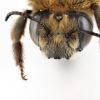 Morning Glory Bees, Cemolobus ipomoea, are rare, solitary bees that specialize on the pollen of morning glory flowers (Ipomoea spp.). This bee is relatively large, over a half inch long and it is covered in
Morning Glory Bees, Cemolobus ipomoea, are rare, solitary bees that specialize on the pollen of morning glory flowers (Ipomoea spp.). This bee is relatively large, over a half inch long and it is covered in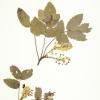 Oregon grape (Mahonia repens) is a low, evergreen shrub of dry habitats in the forests and mountains of Colorado, up to 10,000 feet. Mahonia repens is a member of the Barberry family, a group known to have lived in our region—found as far
Oregon grape (Mahonia repens) is a low, evergreen shrub of dry habitats in the forests and mountains of Colorado, up to 10,000 feet. Mahonia repens is a member of the Barberry family, a group known to have lived in our region—found as far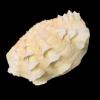 Tridacna squamosa, or the fluted giant clam, is a species of giant clam native to the Indian and Pacific oceans. It is the largest living bivalve (named for the two symmetrical shell 'valves' that are connected, or hinged, by ligaments).
Tridacna squamosa, or the fluted giant clam, is a species of giant clam native to the Indian and Pacific oceans. It is the largest living bivalve (named for the two symmetrical shell 'valves' that are connected, or hinged, by ligaments).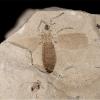 Today’s Wow Bibionids (March Flies) take us back to the Eocene, 56 to 34 million years ago. Fossilized Bibionids like these are very common in fossil insect deposits from Florissant and the
Today’s Wow Bibionids (March Flies) take us back to the Eocene, 56 to 34 million years ago. Fossilized Bibionids like these are very common in fossil insect deposits from Florissant and the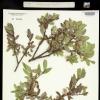 This week’s WoW is the Short-Fruited Willow (Salix brachycarpa)— a medium-sized shrub that grows in Colorado’s moist meadows and wetlands of the subalpine and alpine zones (10,000-14,000 feet elevation). It is widely
This week’s WoW is the Short-Fruited Willow (Salix brachycarpa)— a medium-sized shrub that grows in Colorado’s moist meadows and wetlands of the subalpine and alpine zones (10,000-14,000 feet elevation). It is widely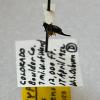 The Colorado Snow Flea, Boreus coloradensis, is named for specimens collected from the Mountain Research Station on Niwot Ridge in 1952 and now preserved in our entomology collection. The common name “snow flea”
The Colorado Snow Flea, Boreus coloradensis, is named for specimens collected from the Mountain Research Station on Niwot Ridge in 1952 and now preserved in our entomology collection. The common name “snow flea”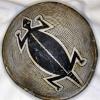 Mimbres bowls are likely the most famous ceramics in Southwest archaeology and are preserved by natural history, anthropology, and art museums around the country. Mimbres refers to the Mimbres Valley of
Mimbres bowls are likely the most famous ceramics in Southwest archaeology and are preserved by natural history, anthropology, and art museums around the country. Mimbres refers to the Mimbres Valley of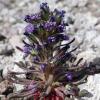 This alpine-endemic plant is now known from four sites in the San Juans of southwestern Colorado. The species was originally collected in 1892 at an uncertain type locality. (The “
This alpine-endemic plant is now known from four sites in the San Juans of southwestern Colorado. The species was originally collected in 1892 at an uncertain type locality. (The “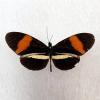 The Heliconius or passion-vine butterflies are tropical butterflies from Central and South America that show a huge diversity of wing patterns. They have undergone rapid speciation and divergence (being
The Heliconius or passion-vine butterflies are tropical butterflies from Central and South America that show a huge diversity of wing patterns. They have undergone rapid speciation and divergence (being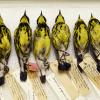 The magnolia warbler (Setophaga magnolia) is a small songbird with a distinctive black mask and streaked “necklace” laid on a brilliant yellow breast. Each spring and fall these birds make a long-distance migration, flying
The magnolia warbler (Setophaga magnolia) is a small songbird with a distinctive black mask and streaked “necklace” laid on a brilliant yellow breast. Each spring and fall these birds make a long-distance migration, flying

